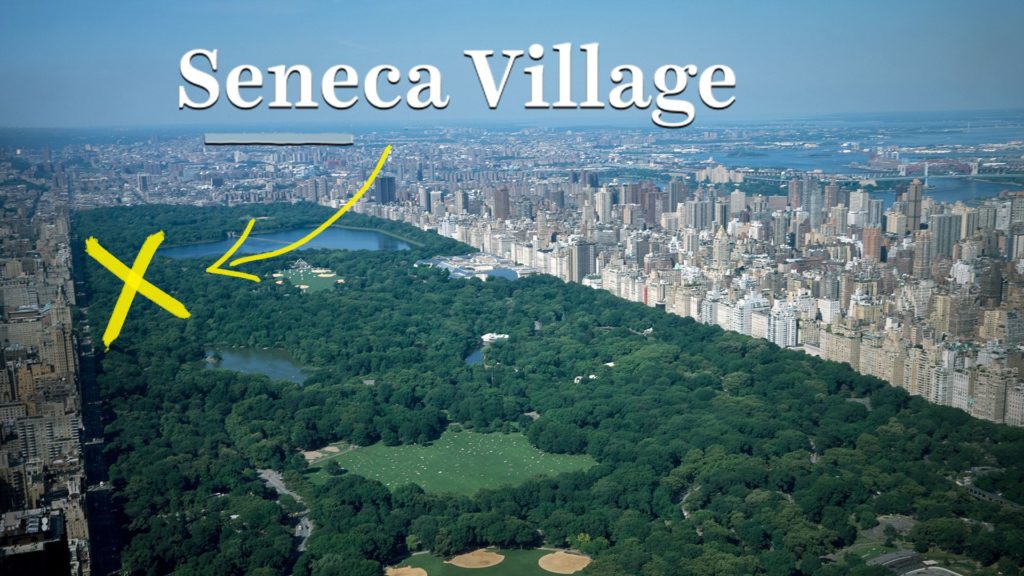
A few months ago I visited New York City for the first time. Prior to my arrival, my friends, temporary residents of Manhattan for the duration of their summer internships, asked me what places I would most like to visit. At the top of my list stood “✰Central Park✰,” underlined and starred as such to clearly convey to them this was a “must do.” I am happy to say that we walked, what felt like, the entirety of Central Park. I was in awe at the sight of this place that I had only read about in books and seen in movies and TV shows.
However after reading an excerpt from Kia Corthron’s Moon and the Mars, I realized that I had in fact not seen Central Park in its entirety as I had first thought, and even more so, nor would I ever be able to. As the book explains and as was further discussed by Corthron herself in class on Wednesday, Central Park as we know it today keeps buried a dark secret beneath its long stretches of green grass. The tourist attraction actually arose from the destruction of Seneca Village, home to quite a few of Theo’s family members in the book. The New York Times reported that in the debate over where to place Cental Park uptown landowners and newspapers used racial slurs to paint Seneca Village as “a shantytown at risk of becoming the next Five Points,” another site in the book where Theo spends most of her time. Upon learning this, I was shocked– how could an event of this magnitude be completely lost in time? I argue that this question is tragically rather easy to answer. This is because Seneca Village, like Five Points, was a poor community that primarily consisted of Black people and Irish immigrants. It was not only a mindless choice to demolish this neighborhood but also to wipe it from history exactly because of who it was that occupied this space; to the wealthy Whites of Manhattan, Seneca Village’s occupants and their homes and livelihoods did not matter. Furthermore, despite the poverty and unstable living and working conditions Theo and her loved ones faced in both of these neighborhoods, these spaces provided its residents a form of protective relief from the racial discrimination they experienced in other parts of the city. Thus, the neighborhood was completely razed to the ground, and with it, a community, culture, economy, and network of people erased from history. With that being said, in focusing on these forgotten neighborhoods of New York City, Corthron’s novel highlights the racialization of space in determining who and where has value and who and where is disposable.

I agree! Like you, I was surprised to find out about Central Park/Seneca Village’s history while reading the “Moon and the Mars”. I really like how you pointed out that because Seneca Village was once home to many minorities and, as you cited with the New York Times article was “a shantytown”, it was much easier to demolish the neighborhood and wipe away the history and culture of the many Black people and Irish immigrants. It is sad to acknowledge that these areas that many minorities and marginalized people once found solace and a home in because of the racial discrimination they faced, was tragically erased with no question, serving as a stark reminder of the many racial injustices and oppression that have persisted throughout history.
I read the article that you attached in your post and it saddened me read about how the land was just taken from black Americans and Irish immigrants. I also thought it was belittling how the true history of the land was commemorated with a plaque. I wonder if the New York education system discusses the history of Central Park in their schools. I am going to New York for fall break and am interested in seeing how they have commemorated Seneca Village or have any history on it at museums or even at the park.